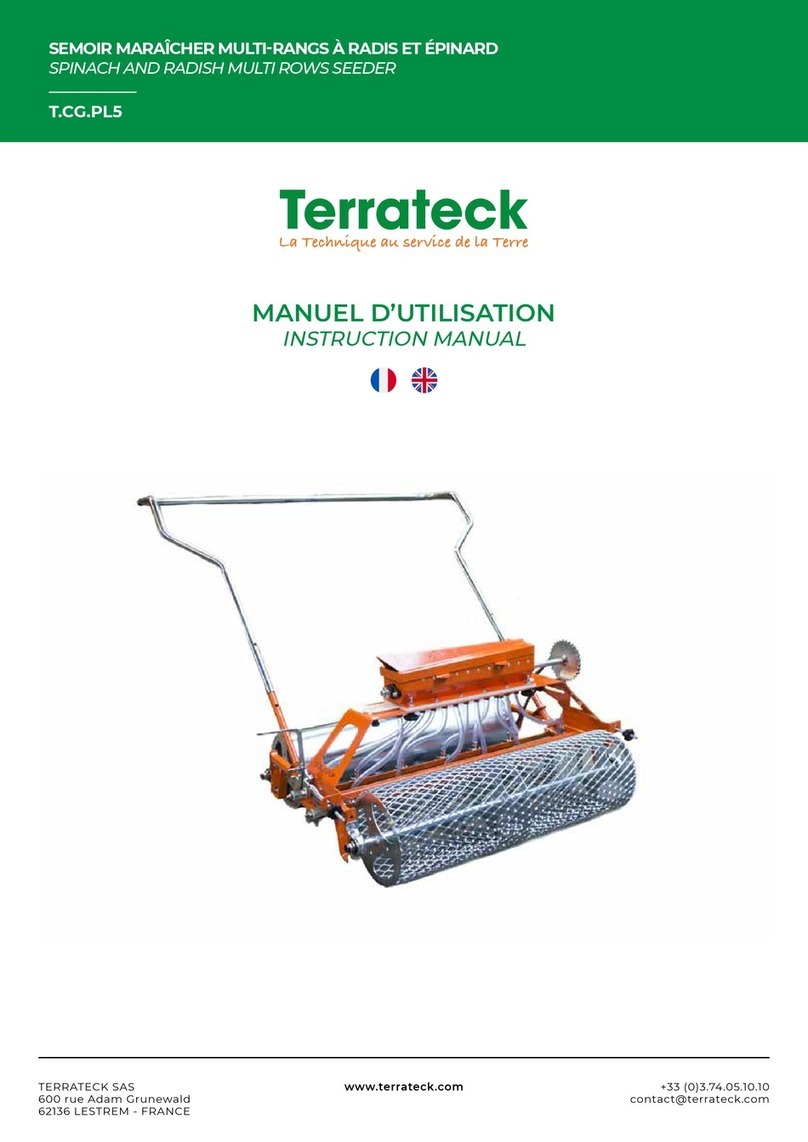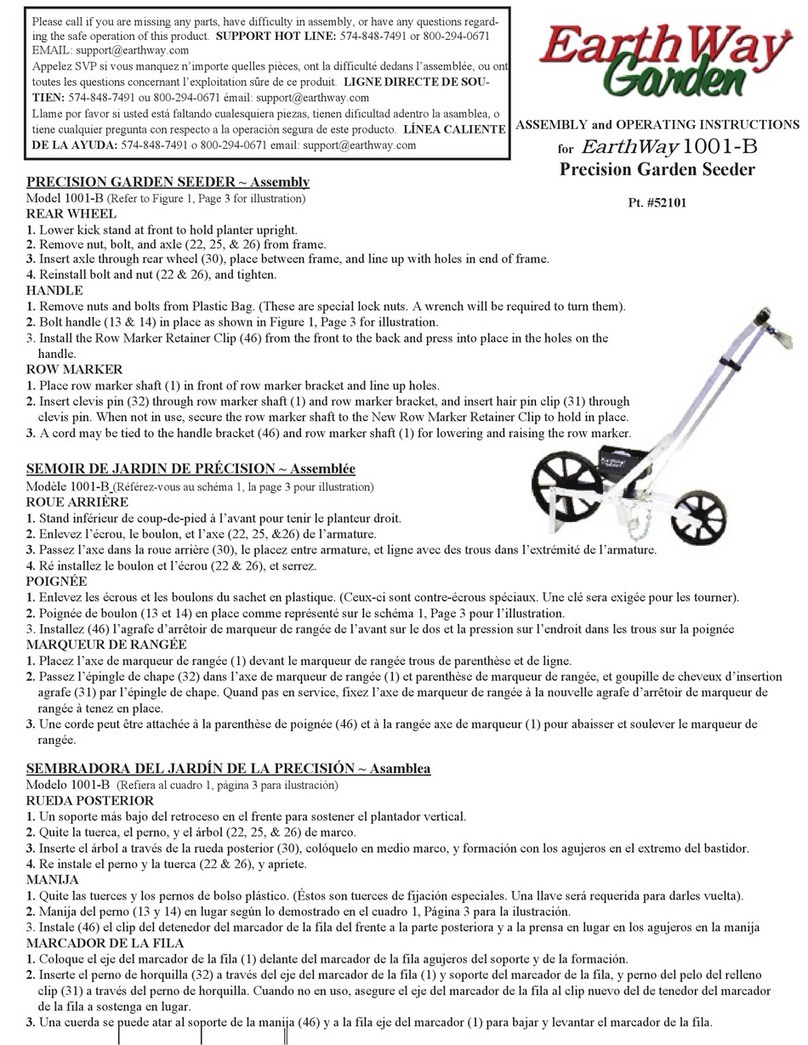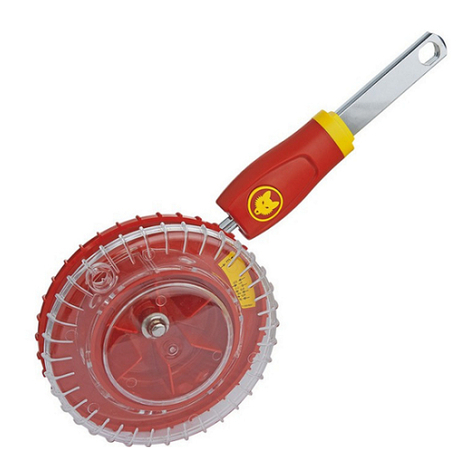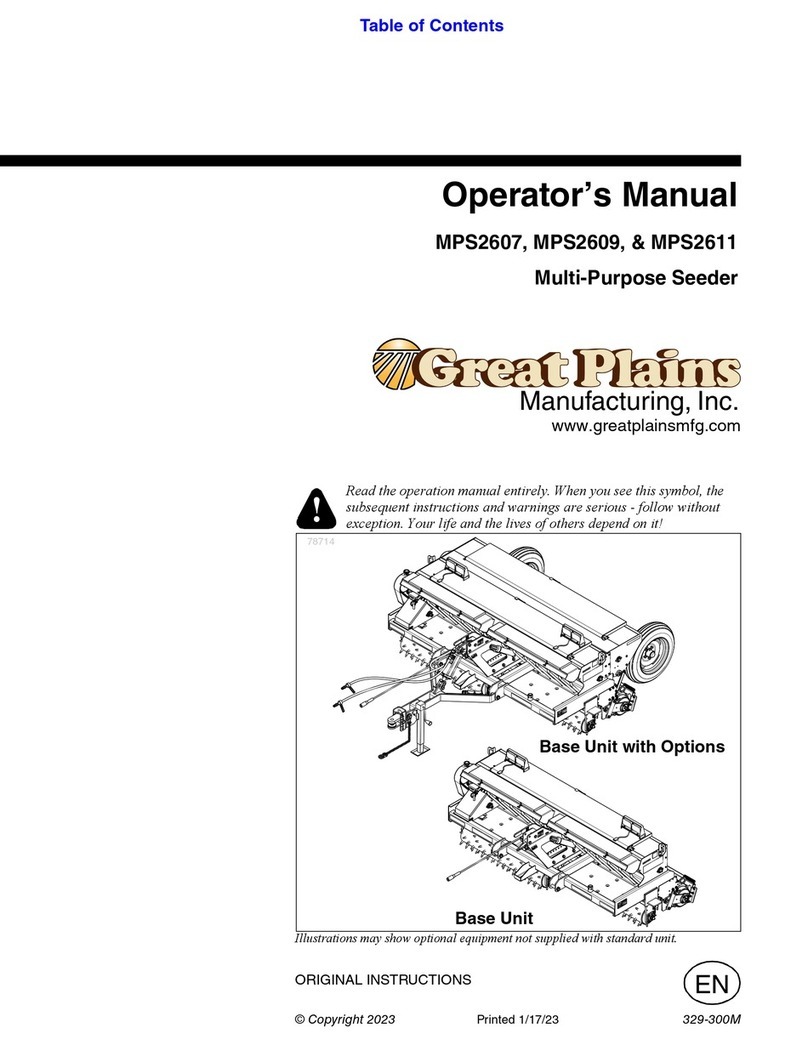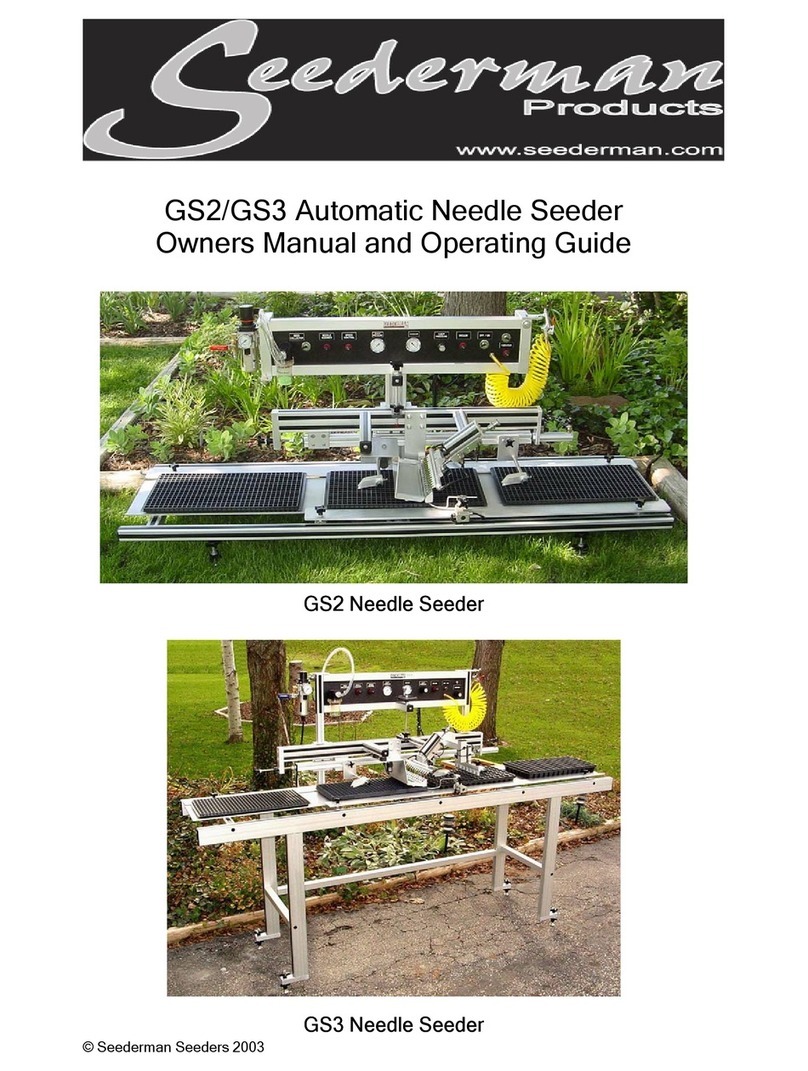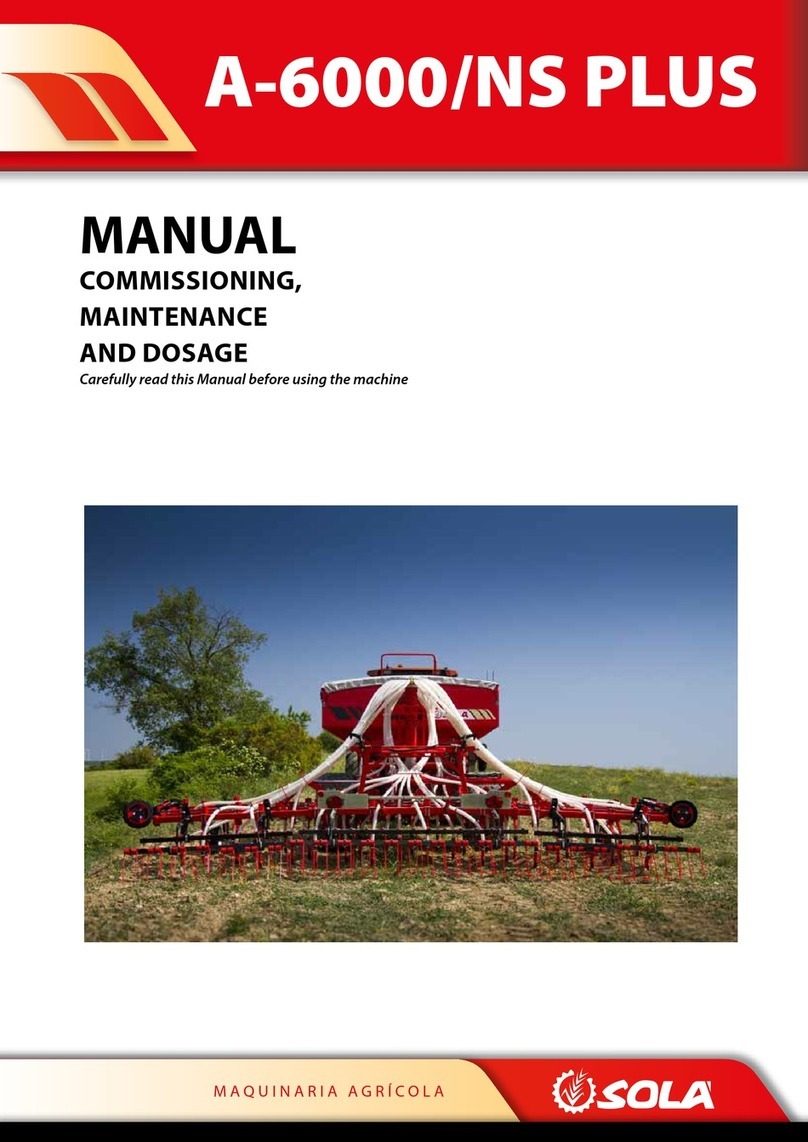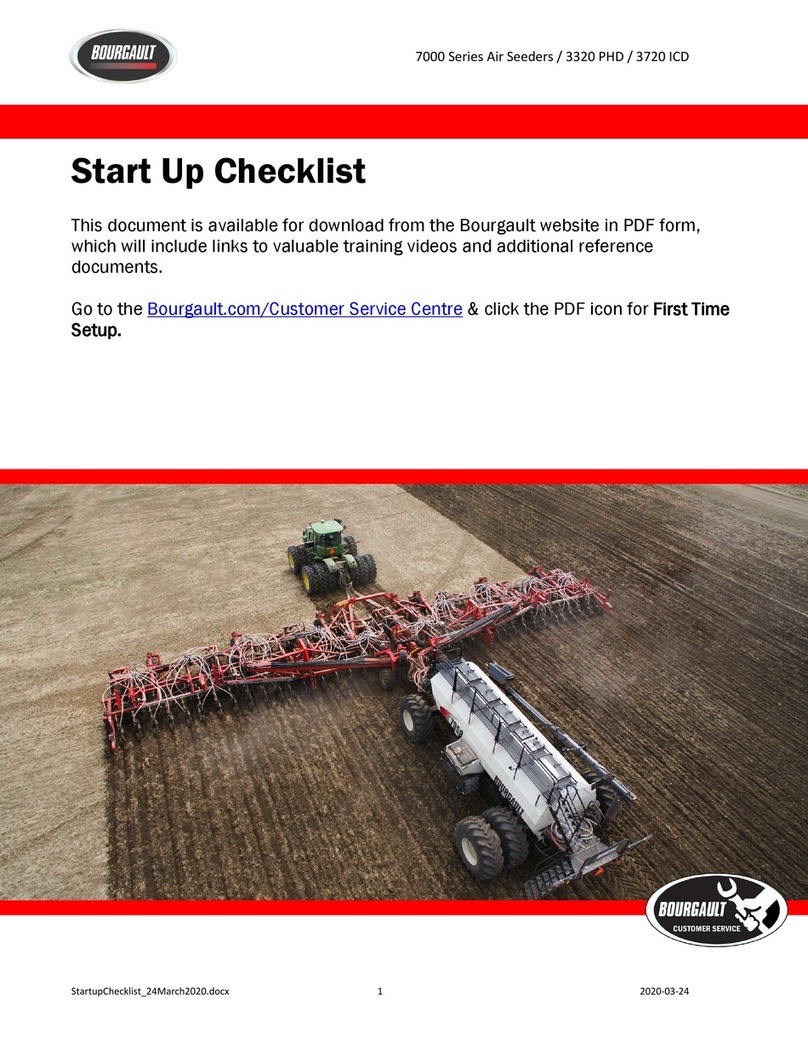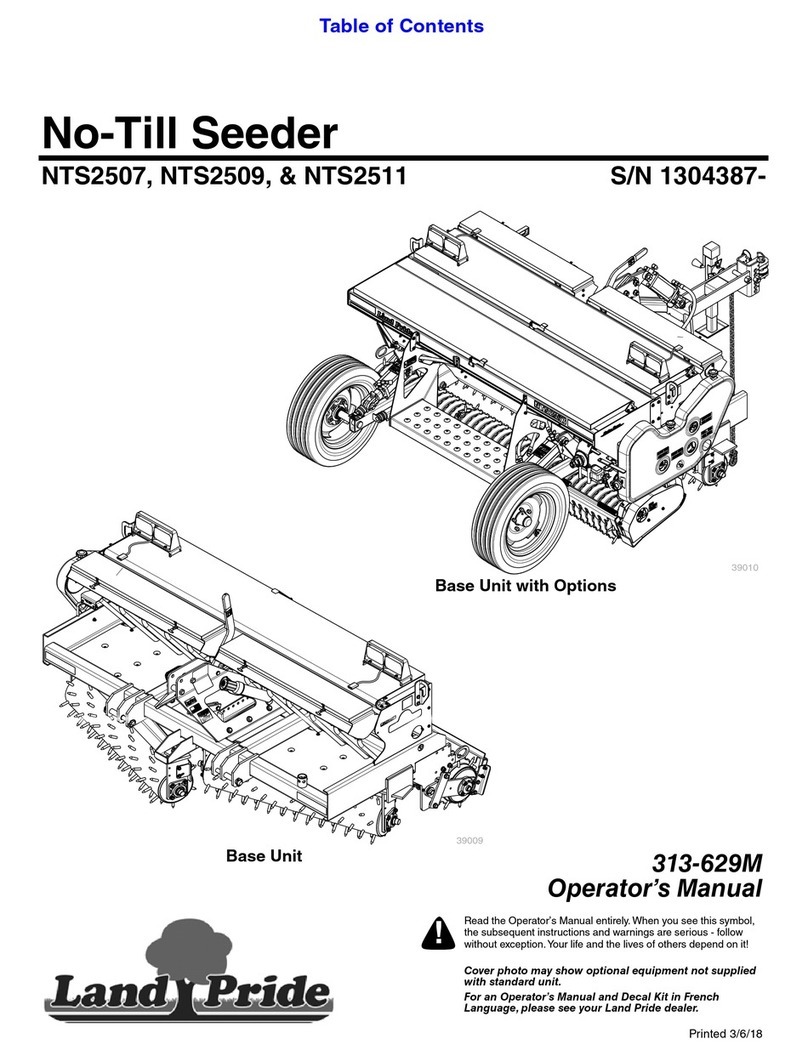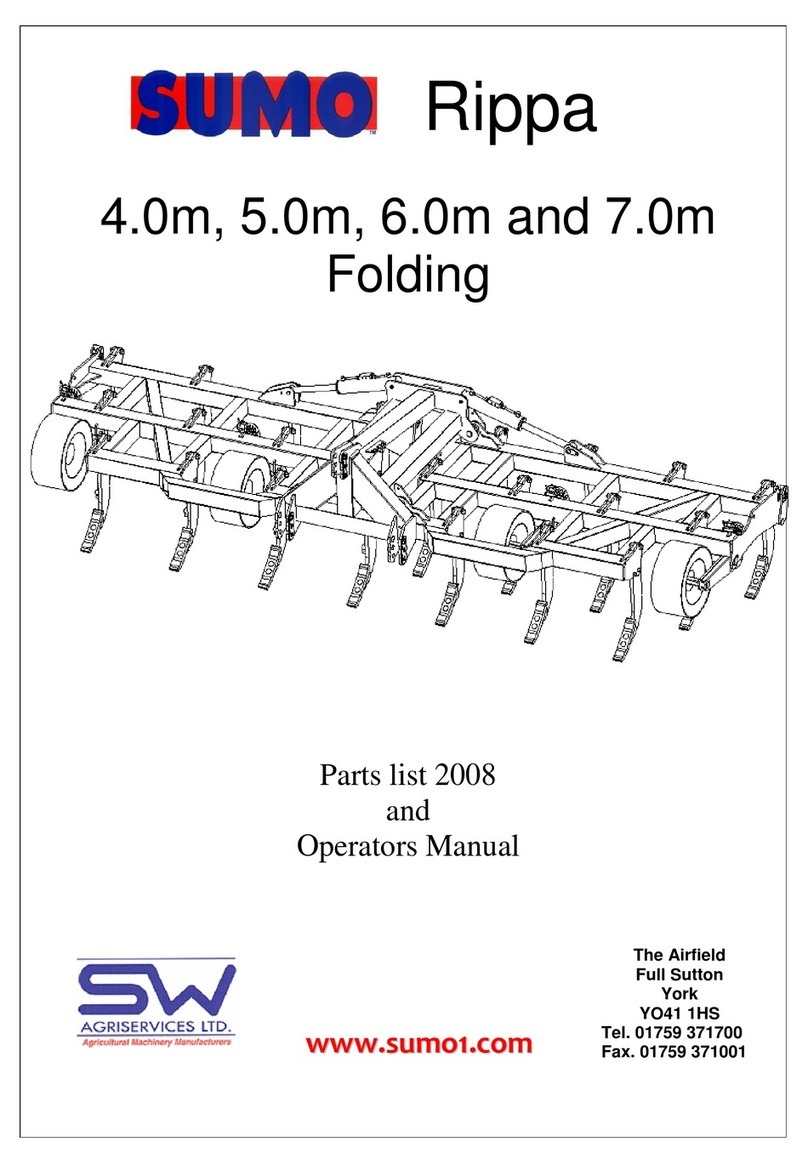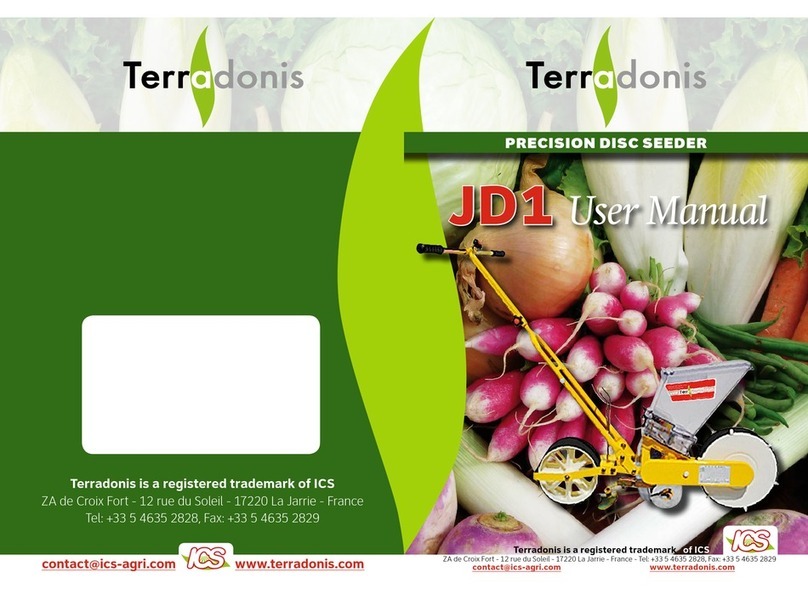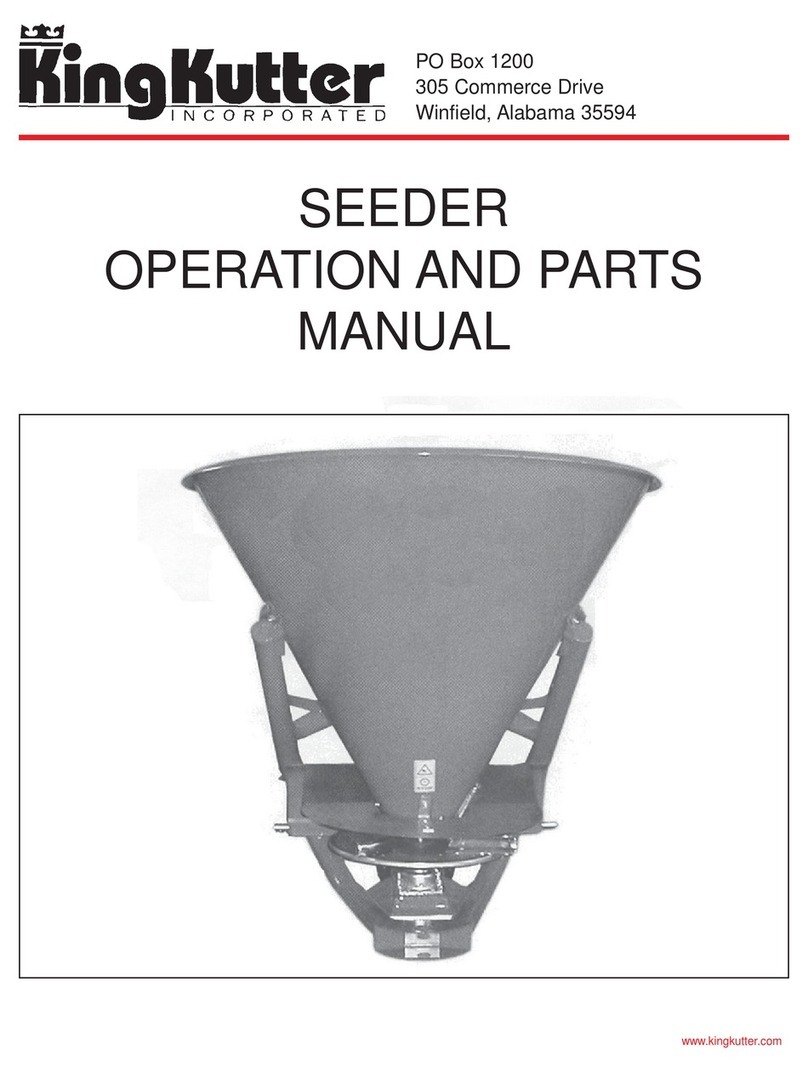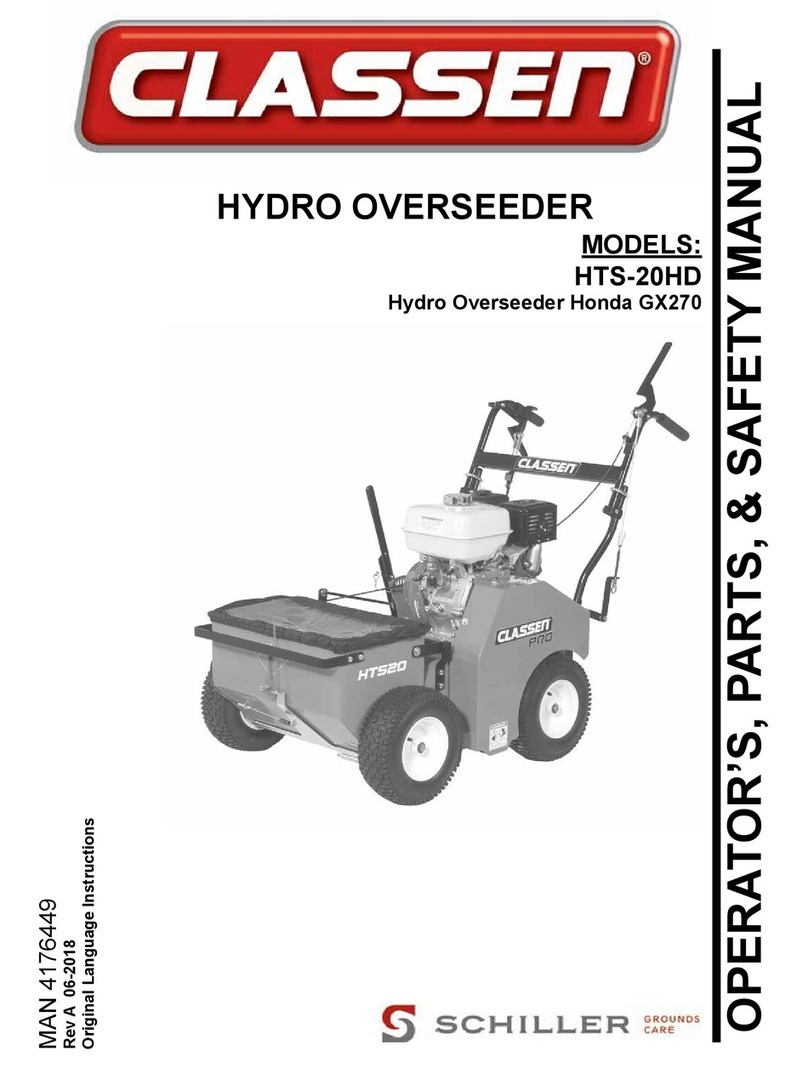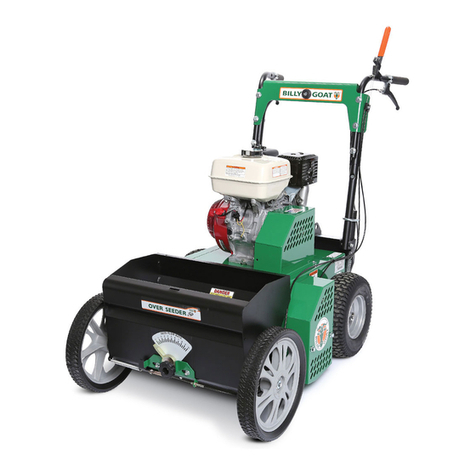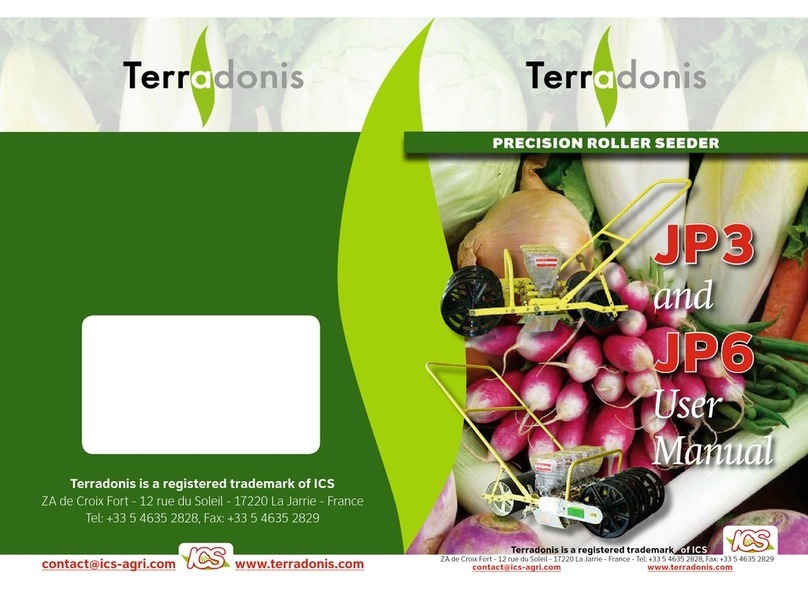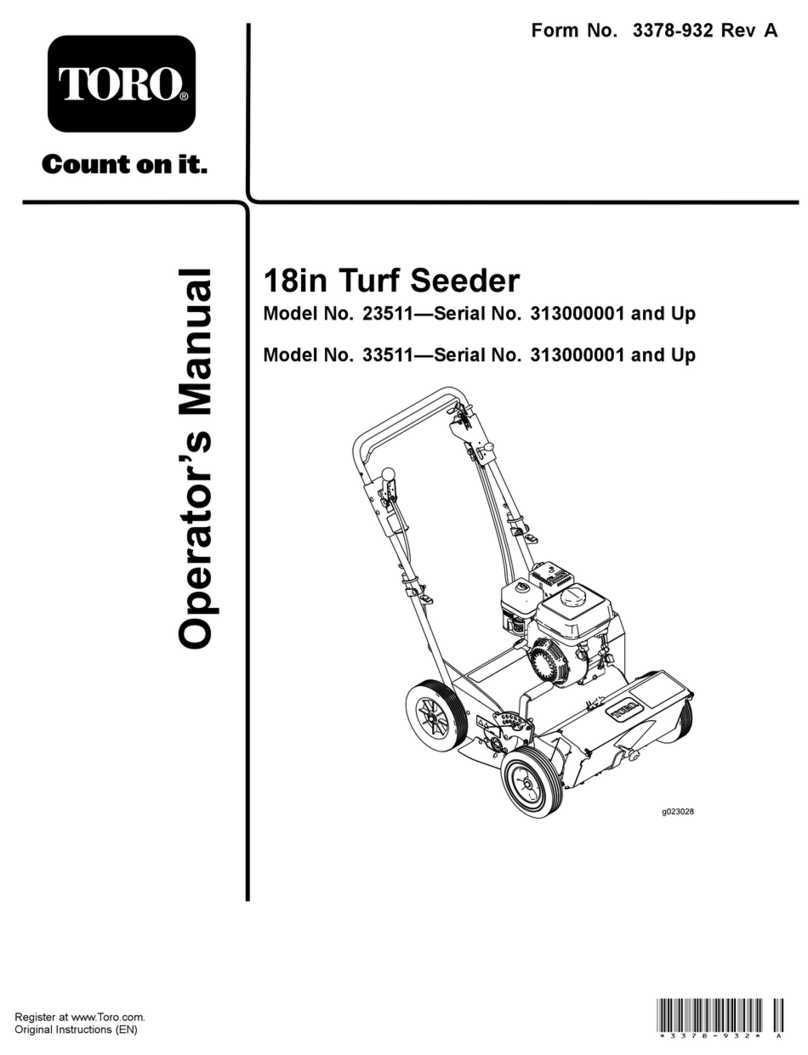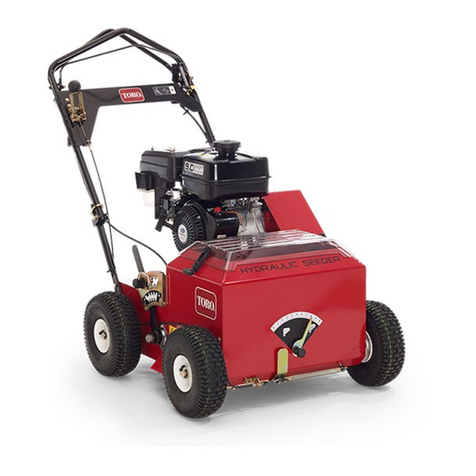Inserting Needles
Your machine came equipped with a set of needles. Each needle has
qualities that are more suited to different types of seed. Below are some
examples of seeds and the needles you should use for each. Use this as a
general guide to help determine the proper needle for the seed you are
sowing. If you have questions, or need another needle size, please contact
us.
Color Size Seed type
Clear .008 Petunias, Dusty Miller, Coleus
Red .010 Impatiens, Tomatoes (small), Carnations
Orange .013 Marigold, Salvia, Vinca, Peppers
Blue .016 Alyssum, Kale, Zinnia, Dahlias, Pansies
Purple .020 Geraniums, Pelletized seed, Brassicas
Pink .023 Large palletized seed
Green .033 Cyclamen, cucumber
Amber .054 Squash, zucchini
Insert needles into the tip on the
needle bar insuring tips of
needles are facing vertically in
the down position. Do not use
undue pressure to insert needle
into tip as it may cause the tip to
break. If needle does not insert
easily, inspect needle and tip for
debris or damage.
Your kit comes equipped with extra needles
and needle tips. Replace if necessary. Tips
are screw mounted, needles are push
mounted. If you need additional needles or
tips, please contact us.
When using multiple needles per cell,
position outside needles slightly inward to
ensure accurate sowing.
